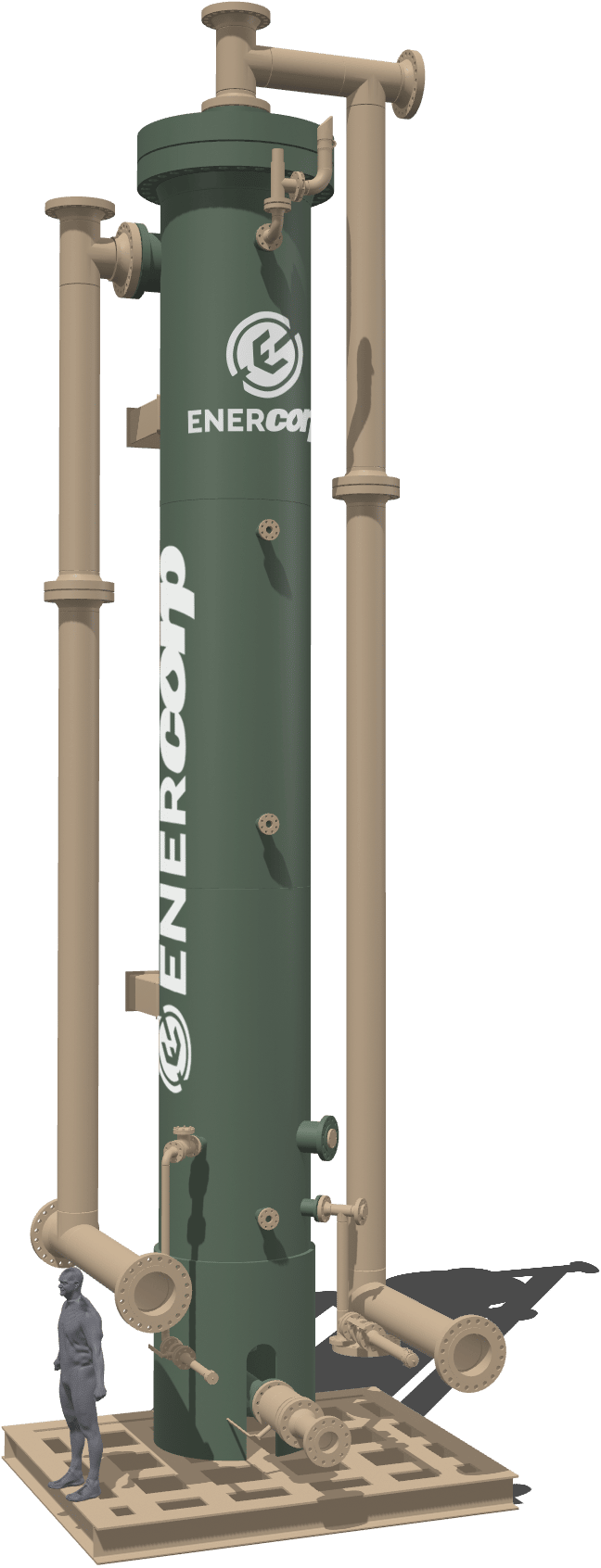Sand Management for the steady state phase
Sahara Facility Cyclone

Sand management technology designed for the steady state phase
After the initial flowback stage with high volumes of sand, there is often no longer a need for wellhead desanders such as the Sahara Advanced Sand Cyclone at the wellsite. However, smaller volumes of sand are still being produced during the steady state phase, so what is the most effective and economical solution to manage this sand?
The Sahara Facility Cyclone is ideal for production facilities connected to multiple wells during the steady state phase. This facility cyclone can handle the combined flow rates from multiple fields, providing a cost-effective and efficient solution for managing produced solids.
Just like the Sahara Advanced Sand Cyclone, the Sahara Facility Cyclone protects the facility from each well producing sand. While one well producing 2 lbs of sand per day may not be an issue, it can be when there are 20, 30, or 40 wells connected to the same facility. The Sahara Facility Cyclone can step in and combat sand damage where it really matters — at the facility.
How the Sahara Facility Cyclone will benefit your operation
 Greater sand capture rate: The Sahara Facility Cyclone can capture particles of even smaller microns as compared to the Sahara Advanced Sand Cyclone, ensuring no sand flows to the production facility.
Greater sand capture rate: The Sahara Facility Cyclone can capture particles of even smaller microns as compared to the Sahara Advanced Sand Cyclone, ensuring no sand flows to the production facility. Fewer maintenance points: Instead of maintaining 20 or 30 different sand management vessels at different wells, your operation can oversee a single vessel with a single set of SOPs.
Fewer maintenance points: Instead of maintaining 20 or 30 different sand management vessels at different wells, your operation can oversee a single vessel with a single set of SOPs. Less NPT for facility cleanouts: Sahara Facility Cyclone removes the erosive sand before it gets into the facility. As a result, the facility doesn’t need to shut down for repairs and maintenance, as erosion due to sand is eliminated.
Less NPT for facility cleanouts: Sahara Facility Cyclone removes the erosive sand before it gets into the facility. As a result, the facility doesn’t need to shut down for repairs and maintenance, as erosion due to sand is eliminated. Lower operating costs: The Sahara Facility Cyclone is operator owned, with the cost amortized over the life of the facility. There are no monthly rental costs.
Lower operating costs: The Sahara Facility Cyclone is operator owned, with the cost amortized over the life of the facility. There are no monthly rental costs.
 Higher flexibility: Once it is determined the sand rates captured at the facility no longer call for mitigation, the Sahara Facility Cyclone can be moved to another facility and customized for its well pressures.
Higher flexibility: Once it is determined the sand rates captured at the facility no longer call for mitigation, the Sahara Facility Cyclone can be moved to another facility and customized for its well pressures.
Better insights: With the Sahara Facility Cyclone, operators can quantify sand at the facility so they can make better decisions with data points — rather than assumptions.
 Less HSE exposure: With less crew on site as well as less unnecessary equipment, your operation can protect your personnel and the environment.
Less HSE exposure: With less crew on site as well as less unnecessary equipment, your operation can protect your personnel and the environment. Smaller equipment footprint: The Sahara Facility Cyclone is large, that’s for sure. But it has a smaller overall footprint than many sand management vessels running at multiple wells at the same time.
Smaller equipment footprint: The Sahara Facility Cyclone is large, that’s for sure. But it has a smaller overall footprint than many sand management vessels running at multiple wells at the same time.

